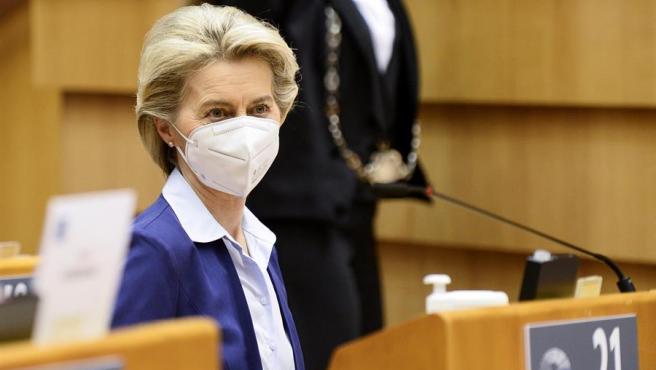The European Commission has confirmed this Friday that it has received the Spanish recovery plan, the document with 102 reforms and 110 investments with which the Government intends to access 25,000 million euros in European aid before the end of 2021 and a total of 140,000 million during the next six years, as long as it is approved by the community institution and the rest of the partners.
“The fund will finance the country’s recovery , with projects linked to the ecological and digital transition, to cohesion and equality,” said the President of the European Commission, Ursula von der Leyen , when announcing through Twitter the reception of the Spanish plan.
The arrival of the text in the European capital is the starting gun for the Community Executive to begin examining it. The European authorities have a period of two months to carry out their analysis and if they give the green light, the plan will pass into the hands of the Member States, which will have the last word.
Once approved, Spain will receive an advance of 9,000 million euros , which would be the first tranche and would arrive in July at the earliest, provided that all member states have ratified in their national parliaments the regulations that allow Brussels to issue the debt with the that will finance this investment plan of 800,000 million (750,000 million at 2018 prices).
After the advance, any aid disbursement is conditional on the fulfillment of a series of goals and milestones that the Government will have agreed with the European Commission. In this sense, the Spanish Executive trusts in being able to receive a first disbursement of 16,000 million euros because it considers that it has already fulfilled a large part of the agreed objectives.
Payments to Spain by the European fund – baptized as Next Generation EU – throughout this year would be completed with another 2,000 million from the REACT-EU item, the disbursement of which follows another route and does not depend on the recovery plan, since they are aid destined to the autonomous communities to reinforce the health and educational systems.
Thus, the Government hopes to receive 27,000 million euros in European aid from the EU’s anti-crisis plan in 2021. The rest would be disbursed in semi-annual payments until 2026 as the goals and milestones agreed with the community authorities are met. In total, Spain expects to absorb 140,000 million, of which about 70,000 will be in the form of non-refundable direct transfers.
Negotiation table
The delivery of the Spanish recovery plan culminates months of negotiations between the Government and the European Commission, which must now examine the document . The last contacts, in fact, took place last week, when the vice presidents of Economic and Labor Affairs, Nadia Calviño and Yolanda Díaz , respectively, met with the economic vice president of the Community Executive, Valdis Dombrovskis.
The plan was unveiled two weeks ago by the President of the Government, Pedro Sánchez and is divided into four axes, 30 components and 212 measures: 110 investments and 102 reforms. Of these, the most controversial are the reform of the labor market and the reform of the public pension system, without which it would not be possible to access aid.
In general, the Spanish document foresees to allocate 39% of the funds to the ecological transition , 29% to the digital transformation, 10.5% to education and training and 7% to R + D + i .
The intention of the Government is to concentrate the deployment of investments in the first three years of the fund and channel with them 70,000 million euros between this year and 2023 to drive the recovery firmly. Among the main target sectors are sustainable mobility, the renovation of public buildings and homes or the modernization of public administration.
In addition to the Spanish plan, Brussels received this Friday the proposals from Luxembourg, Denmark and Latvia , with which there are only nine countries that have complied with the delivery of their plans within the formally set deadline and that ends this Friday. Portugal was the first country to send its reform and investment plan, followed by Greece , France , Germany and Slovakia .
The vice-president of the Commission responsible for Economic Affairs, Valdis Dombrovskis, however, already warned that he was willing to allow some flexibility in the timing in order to ensure the quality of the plans sent.



 Bitcoin
Bitcoin  Ethereum
Ethereum  Tether
Tether  XRP
XRP  Solana
Solana  USDC
USDC  TRON
TRON  Cardano
Cardano  Lido Staked Ether
Lido Staked Ether  Avalanche
Avalanche  Toncoin
Toncoin